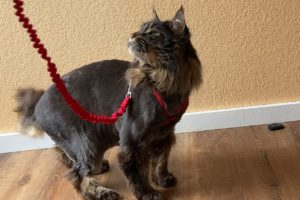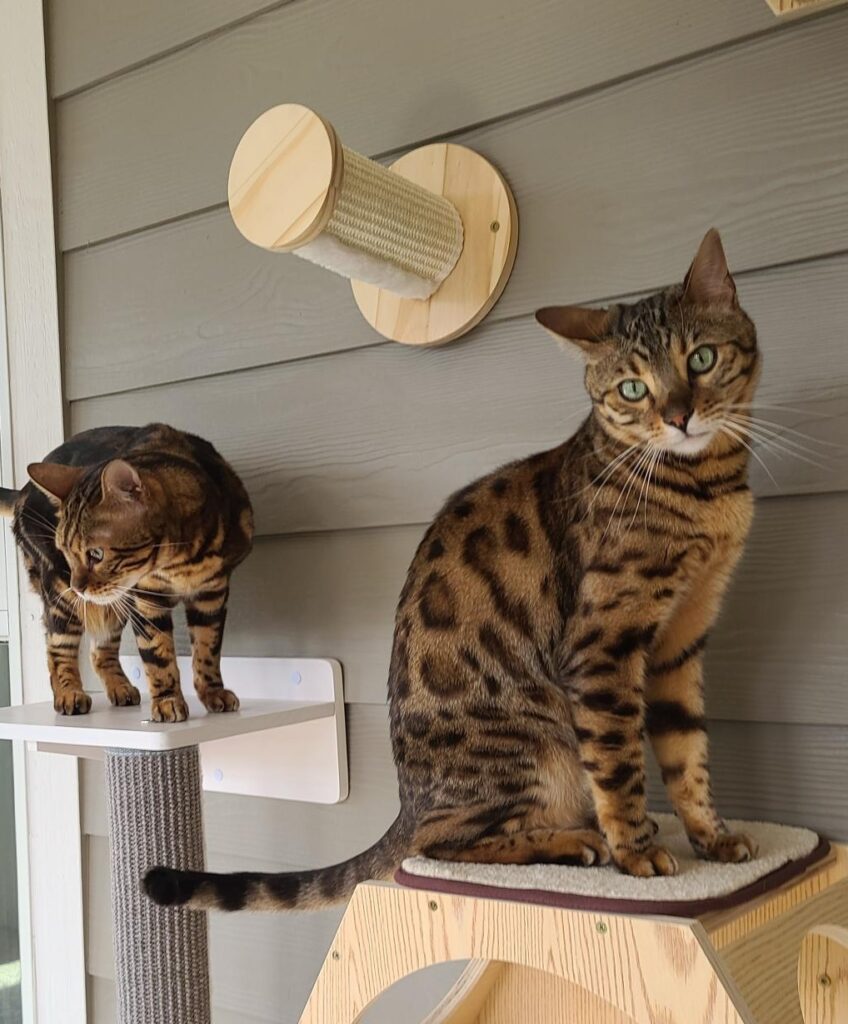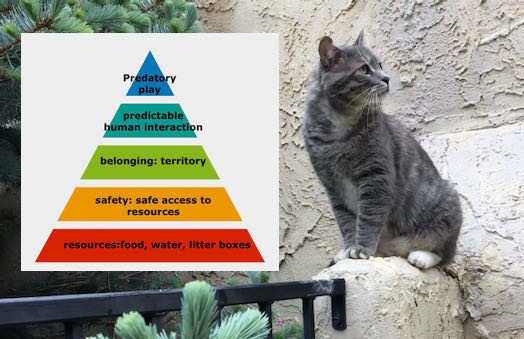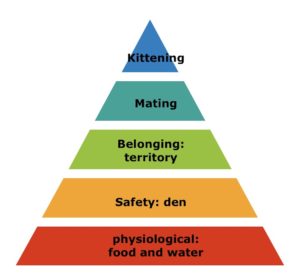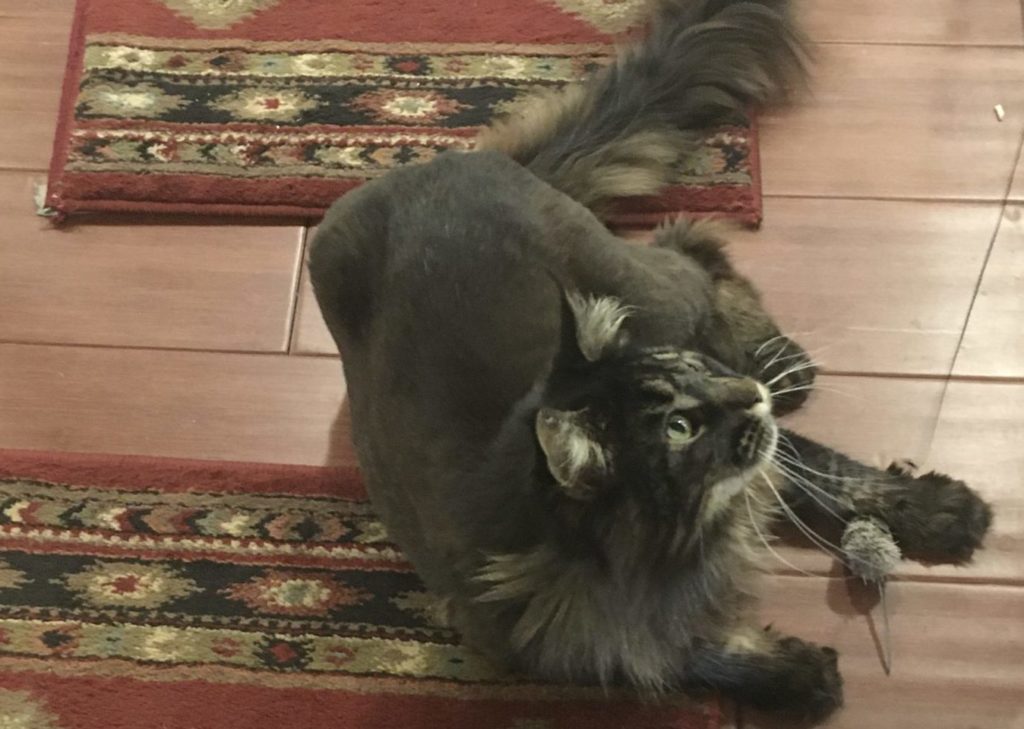
One of the 5 pillars of a healthy feline environment is the opportunity for predatory play. Experts recommend 5-10 minutes of such play daily. When is cats playing with toys – predatory play?
Cats playing with toys – predatory play?
Play in domestic cats is commonly categorized as social, locomotor, predatory, or object play (Reference 1). Social play refers to the wrestling, chasing and pouncing that you see sometimes with cats who are affiliated (see social groups of cats). Object play is play with objects such as balls and catnip mice. Locomotor play involves running, jumping – the “zoomies”. Predatory play incorporates features of both object and locomotor play.
When is cats playing with toys – predatory play? Predatory play can be part of an actual hunt or a play session with inanimate objects (Reference 2).
- Part of the actual hunt: instead of immediately killing the captured prey, the cat “plays” with it, letting the prey escape and recapturing it, tossing it up into the air…
- Play session with toys: the cat “goes through the motions” of hunting/killing on a toy or other inanimate object
In the wild, a “hunting sequence” can mirror the preferences of the individual cat and/or be determined by the prey they are hunting. Often, the cat will stalk the prey, hide in wait for the prey to come out, then pounce at an opportune moment. The hunting sequence ends with the cat catching and eating their prey.
benefits of predatory play
Taking the recommendation of the experts that the kind of play our cats need is the “predatory” kind, what are the benefits of this type of play?
Pet cats are increasingly kept indoors; some cats live exclusively indoors. Wild or feral cats spend most of their waking hours in search of food. Our indoor pets do not have this outlet for their energy and curiosity and this can result in boredom and problem behaviors.
Recent studies show that play is associated with improved welfare. The more play and the more variety of games initiated by the cat or their owner improves the relationship between the owner and the cat. When play is absent, cats suffer distress and behavioral problems such as overgrooming, house-soiling, scratching furniture, and aggression (Reference 3).
Cats playing with toys – predatory play
Predatory play focuses on those skills the cat would use when hunting. How can we mimic predatory play indoors? Which toys are effective at stimulating hunting behavior?
Wand/Chasing toys:
These are a perennial favorite, allowing the owner to vary the speed and location of the toy to mimic the behavior of a mouse or insect moving along the floor. Some cats enjoy jumping and catching the toy while it’s in the air.
A recent study found that 5-10 minutes of daily play with wand/chasing toys reduced the numbers of mammals (mice, rabbits, voles…) captured and brought home by indoor-outdoor cats (Reference 4). The study participants also provided the cat with ‘mouse’ toy filled with bubble wrap to catch and bite and kick after the play session to complete the hunting sequence (Reference 4).
Laser light toys
Many cats enjoy chasing laser light toys – stalking, chasing, and pouncing can be part of this. However, being unable to complete the “hunt” can give rise to frustration. Give your cat some needed reinforcement intermittently to keep them playing the game – use the laser pointer to point to a treat when ending the laser tag session.
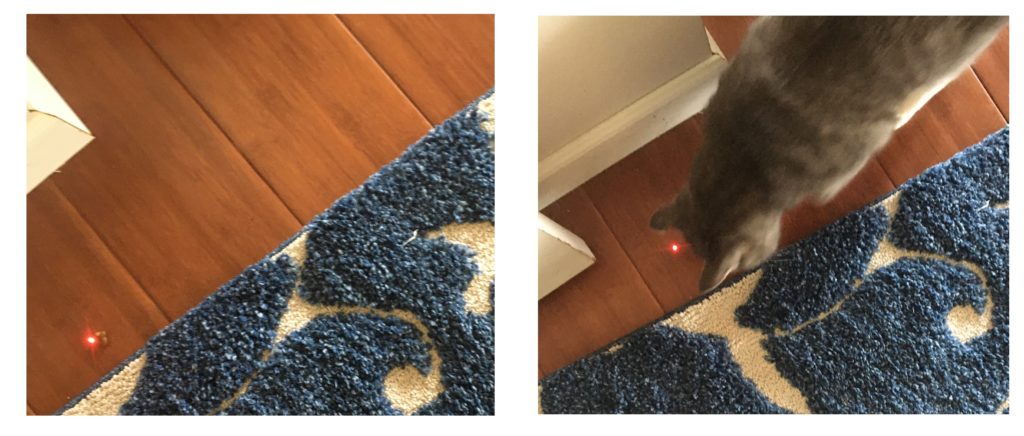
GAMES WITH FOOD – FEED THE NEED TO HUNT
Treat toss
A fun way to feed the need to hunt is to toss your cat his dry food or crunchy treats and watch him hunt them down. This game works best with larger kibbles like those from dental foods, where 10-15 pieces of kibble are about 30 kcal. Tossing the kibble allows your cat to use their senses of hearing and smell, like they would when chasing live prey. See Your Cat is a Born Hunter : Feed the Need to Hunt
Food Puzzles
Food puzzles can mimic the foraging behavior shown by cats in the wild. Although a study aimed at reducing predation in outdoor cats found that food puzzles increased the number of prey animals brought home (Reference 4), these puzzles can keep cats mentally engaged, reducing boredom and controlling food portions to help with weight loss. See Cats at Work : Cats Using Food Puzzles
ELECTRONIC TOYS
As Artificial Intelligence enters the pet market, there are more and more adaptive toys aimed at entertaining your cat. Take a careful look when deciding to purchase these toys:
- Does the toy stimulate hunting type behaviors – stalking, pouncing, chasing?
- Are there elements of frustration embedded in the toy – will your cat be able to complete the hunting sequence?
- How repetitive is the motion? How quickly will your cat become bored with the toy and stop playing with it?
- Can you easily rotate the toy in and out of the daily play sequence?
When is cats playing with toys – predatory play? In predatory play, indoor cats carry out the hunting sequence on toys. Current research shows that daily predatory play can impact your cat’s welfare positively and improve the cat-human bond. The need to hunt defines who your cat is – this is what they were born to do. We need to provide our cats with an opportunity to hunt – whether it is fishing kibble out of a food puzzle or chasing a stuffed mouse at the end of a wand toy.
references
- Mikel Delgado, Julie Hecht. A review of the development and functions of cat play, with future research considerations.
Applied Animal Behaviour Science, Volume 214, 2019, Pages 1-17, ISSN 0168-1591,https://doi.org/10.1016/j.applanim.2019.03.004. - Muhzina Shajid Pyari, Stefania Uccheddu, Rita Lenkei, Péter Pongrácz. Inexperienced but still interested – Indoor-only cats are more inclined for predatory play than cats with outdoor access, Applied Animal Behaviour Science, Volume 24, 2021, 05373, ISSN 0168-1591, https://doi.org/10.1016/j.applanim.2021.105373.
- Henning J, Nielsen T, Fernandez E, Hazel S. Cats just want to have fun: Associations between play and welfare in domestic cats. Anim Welf. 2023 Jan 27;32:e9. doi: 10.1017/awf.2023.2. PMID: 38487456; PMCID: PMC10936385.
- Cecchetti M, Crowley SL, Goodwin CED, McDonald RA. Provision of High Meat Content Food and Object Play Reduce Predation of Wild Animals by Domestic Cats Felis catus. Curr Biol. 2021 Mar 8;31(5):1107-1111.e5. doi: 10.1016/j.cub.2020.12.044. Epub 2021 Feb 11. PMID: 33577746

 Do cats have emotions? Do cats have feelings? Although the words emotions and feelings are often used interchangeably, emotions strictly refer to neurological responses to an event. Feelings on the other hand, are a conscious recognition of these physical sensations; feelings are generated from our thoughts.
Do cats have emotions? Do cats have feelings? Although the words emotions and feelings are often used interchangeably, emotions strictly refer to neurological responses to an event. Feelings on the other hand, are a conscious recognition of these physical sensations; feelings are generated from our thoughts.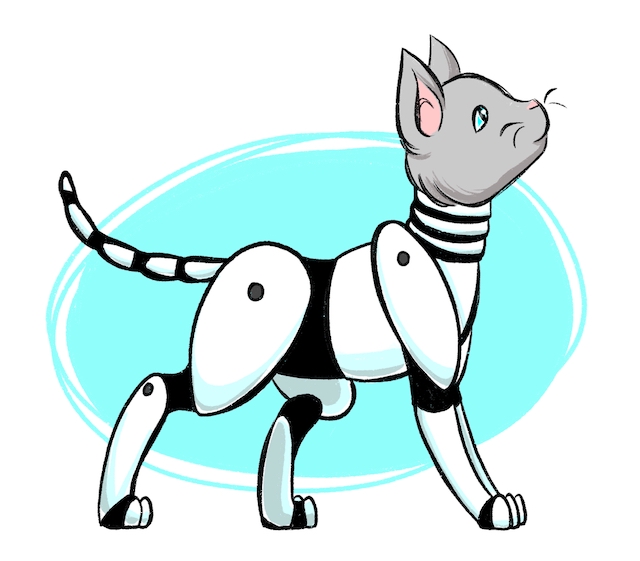
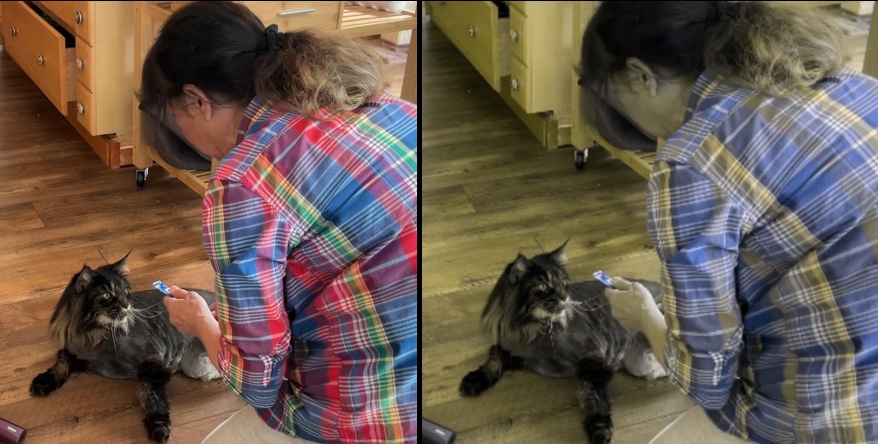
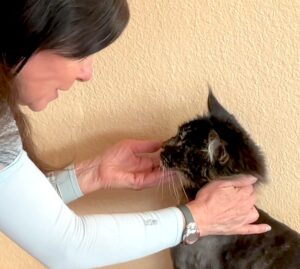 Eye contact is an important part of communication for many people. Face-to-face meetings are thought to be more productive – participants are able to take note of the nuances of facial body language.
Eye contact is an important part of communication for many people. Face-to-face meetings are thought to be more productive – participants are able to take note of the nuances of facial body language.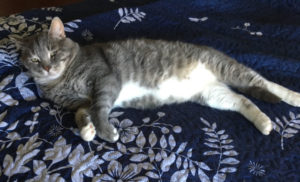 the slow blink
the slow blink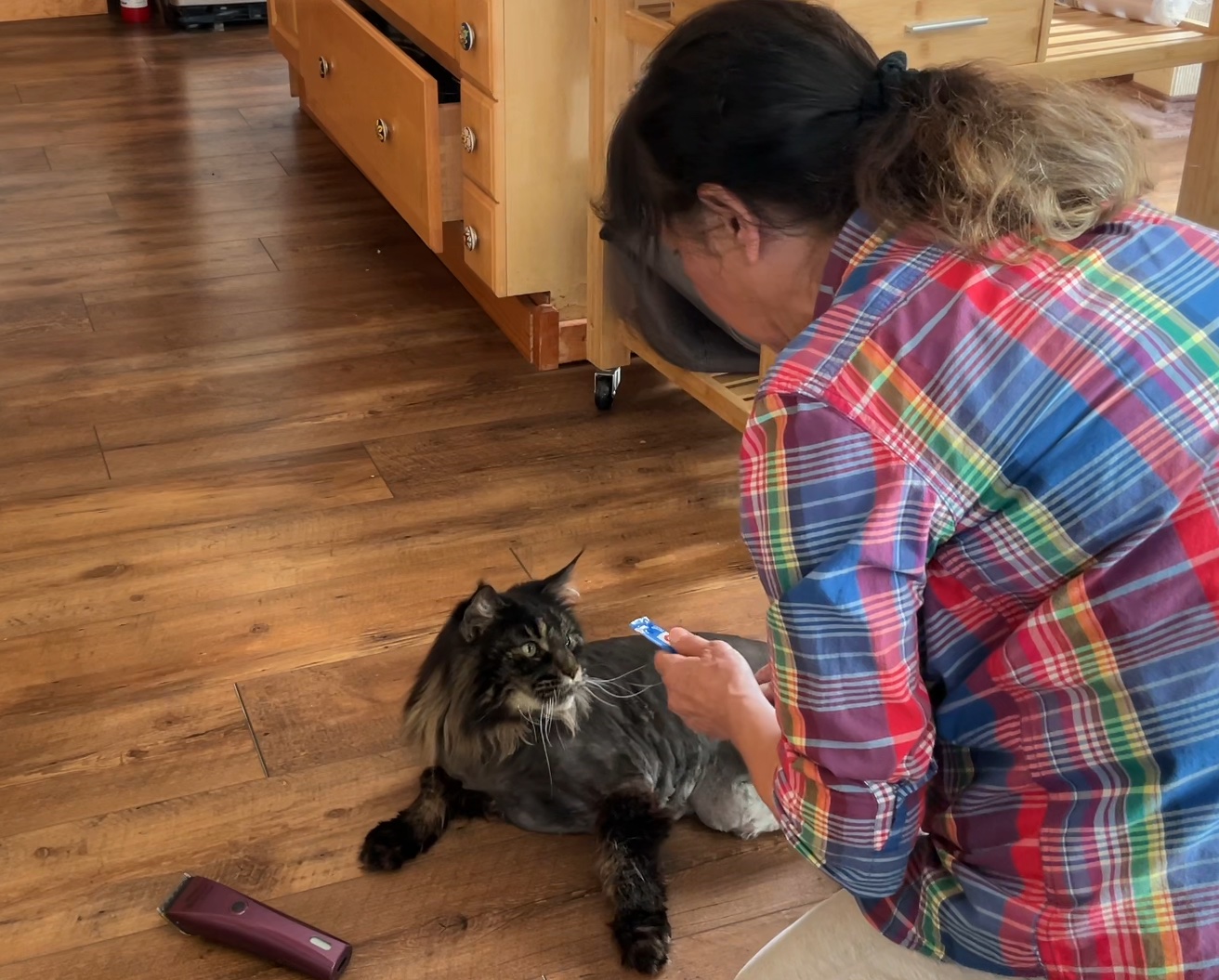 The idea of being able to talk to animals appeals to many people. The famous Dr. Doolittle, the central character in a series of children’s books, preferred animals to people and was able to talk to animals in their own languages. Nowadays, there are people who bill themselves as animal communicators and will “talk” to your animal for a fee.
The idea of being able to talk to animals appeals to many people. The famous Dr. Doolittle, the central character in a series of children’s books, preferred animals to people and was able to talk to animals in their own languages. Nowadays, there are people who bill themselves as animal communicators and will “talk” to your animal for a fee.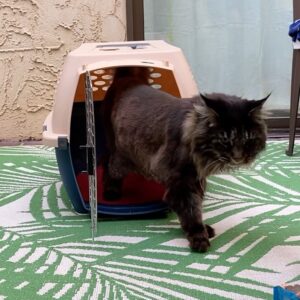 Whether you are relocating or just visiting extended family, flying with your cat requires planning and preparation.
Whether you are relocating or just visiting extended family, flying with your cat requires planning and preparation.